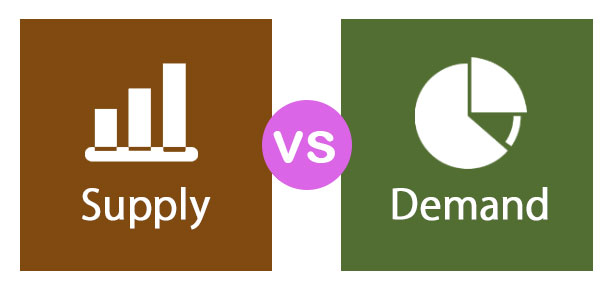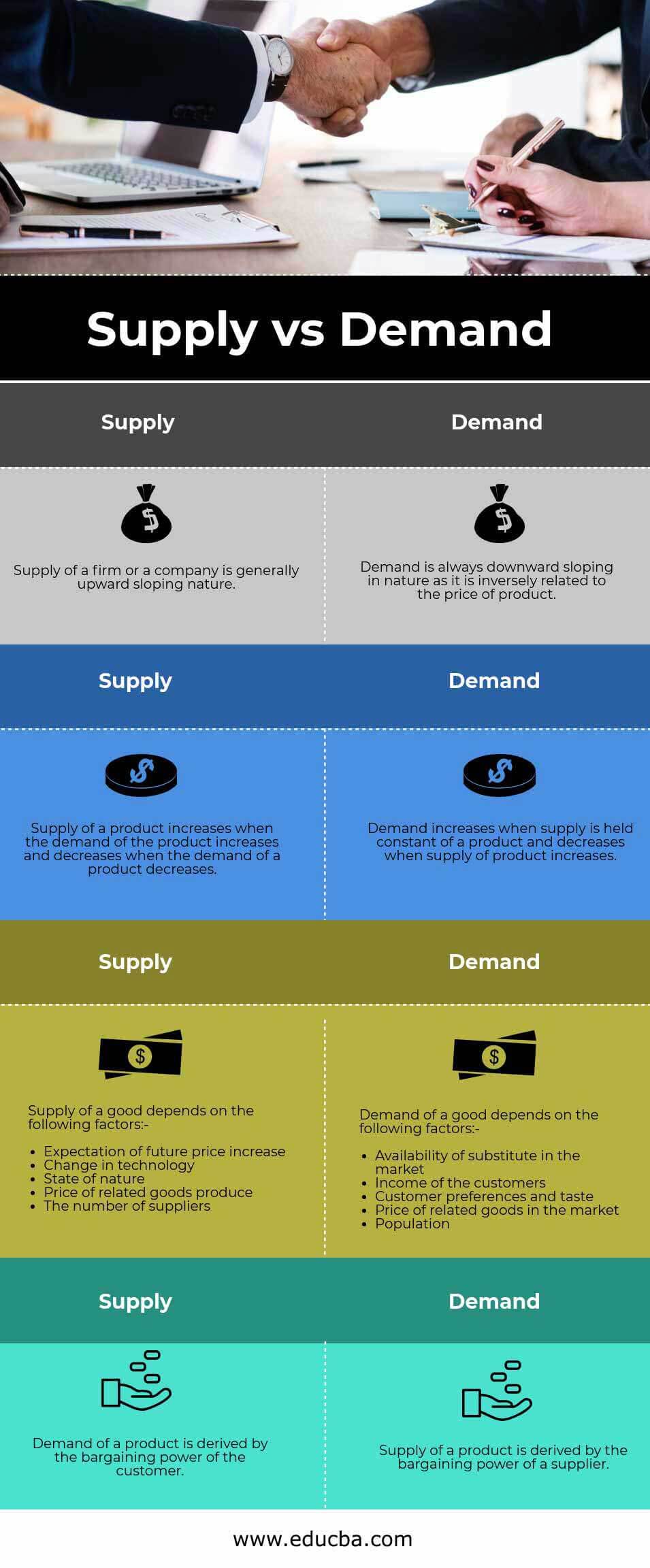Updated July 31, 2023
Difference Between Supply vs Demand
Supply and demand are macroeconomic factors often addressed at every forum and discussion point. Economists and bankers often use the two major terms, but what are the meaning and the rationale behind discussing these points? This article will examine the two widely used macro-economic terms, supply, and demand, in detail, aiming to understand the key difference between them. Although these terms may seem simple, they become complex when scrutinized closely.
Head To Head Comparison Between Supply vs Demand (Infographics)
Below is the top 4 difference between Supply vs Demand:
Key Differences Between Supply vs Demand
Both Supply vs Demand are popular choices in the market; Let us discuss some of the major differences:
- The customer’s desire and willingness to purchase a particular product or thing in the market is what we refer to as demand. On the other hand, supply refers to the availability of that product with the vendor or the manufacturers in the market and how much the supplier is willing to sell.
- Several factors contribute to the derivation of product demand, including the availability of a product, the customer’s income level, preferences for that particular product, and the availability of an alternative product in the market. On the contrary, the supply of a product depends on several factors: the number of suppliers of that product in the market, the nature of the product, scarcity of the resources to produce the product, and various other factors.
- Demand always represents the customer, i.e., it tells us about the customer’s demand and preferences for the product and the customer’s likes and dislikes. On the other hand, product supply refers to the firm or the supplier, which tells us about the supply and availability of various products in the market. It also tells us how much product the supplier can supply.
- The law of demand states that when the price of a product goes up, people tend to buy less of it, and when the price goes down, people tend to buy more. On the other hand, the law of supply states that when the price of a product increases, suppliers are willing to provide more of it, and when the price decreases, they are willing to provide less.
- Supply determines the price from the supplier’s perspective, while demand determines the price from the customer’s perspective.
Supply vs Demand Comparison Table
Let’s look at the top 4 Comparisons between Supply vs Demand.
|
Supply |
Demand |
| The supply of a firm or a company is generally upward-sloping in nature. | Demand is always downward-sloping, inversely related to the product’s price. |
| The supply of a product increases when the demand for the product increases and decreases when the demand for a product decreases. | Demand increases when the supply is held constant of a product and decreases when the supply of a product increases. |
The supply of a good depends on the following factors:-
|
The demand for a good depends on the following factors:-
|
| A demand for a product is derived from the bargaining power of the customer. | A product’s supply is derived from a supplier’s bargaining power. |
Conclusion
In today’s world, even a slight change in the price of a product can have a huge impact on the Supply vs Demand of goods and services. Equilibrium in the market is achieved when the demand for the goods meets the supply of that good. The market is in equilibrium, and the transaction between the supplier and the customer will occur at that price. Any price is other than that, the transaction will not happen.
Balancing the product’s price is crucial for both customers and suppliers to meet their needs and desires.
Recommended Articles
This has been a guide to the top difference between Supply vs Demand. Here we also discuss the Supply vs Demand key differences with infographics and a comparison table. You may also have a look at the following articles to learn more.



